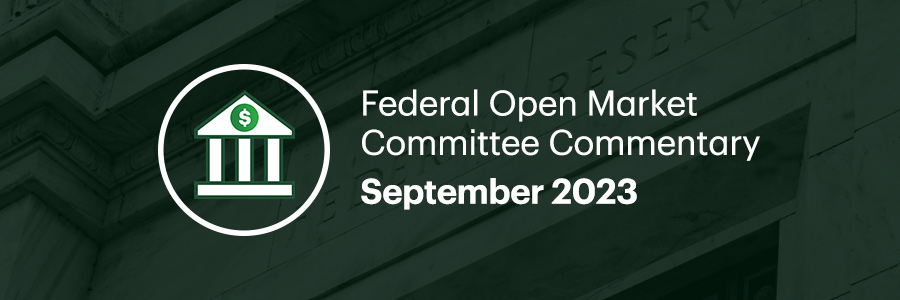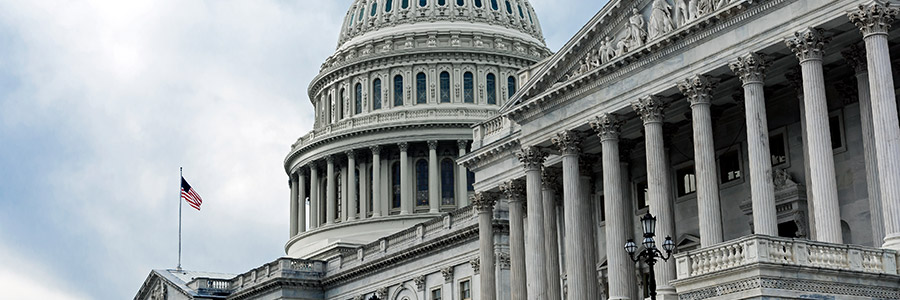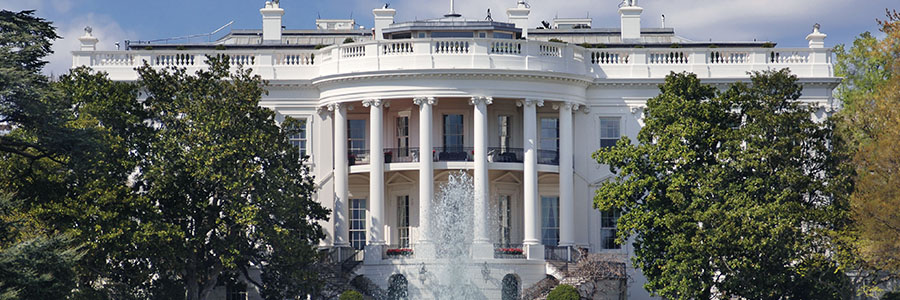Higher For Longer (H4L) and the Case for a U.S. Recession
By: Oscar Muñoz, Gennadiy Goldberg, Molly McGown, Andrew Kelvin
Oct. 20, 2023 - 8 minutes
The U.S. economy continues to defy gravity despite the most rapid monetary policy tightening in recent history. Consumer resilience in particular has provided more support to the idea that a soft-landing remains a clear possibility in the U.S for 2024. Still, we remain of the view that a recession is the most likely outcome for next year despite recent strength in activity data, a scenario that is currently being under-priced as the market appears to be extrapolating current data momentum deep into the future.
Given considerable strength in Q3 economic output, stronger consumer balance sheets and a more gradual normalization in labor market conditions, we are pushing back by one quarter our expectation for the start of a U.S. recession. We are now consolidating our forecast for contraction to start in 24Q2 and assuming a slightly more subdued total downturn (peak to trough) that only encompasses two quarters, rather than the previous three.
The update to our economic view has significant implications for our monetary policy projections. We now look for the Fed to start reducing rates in June 2024 rather than in March and forecast less overall monetary policy easing of 250bp from 300bp before. We also continue to expect the Fed to discontinue quantitative tightening (QT) when rate cuts begin.
Resilient Economy = H4L
The passthrough from prior policy tightening has not been as seamless as has been the case historically, but we judge it to be an issue of the transmission mechanism rather than the outright level of rates. The starting point matters and the state of the U.S. economy going into the current tightening cycle differed considerably from previous episodes, which saw either decelerating/under-control inflation or no meaningful support from fiscal policy. In addition, this time around both consumers and businesses are boasting stronger balance sheets taking advantage of an unusually low interest-rate environment after the financial crisis and post-Covid period. We think this has helped slow the passthrough from a tighter monetary policy stance to the real economy given the lack of urgency in seeking financing over the past year and thus avoiding high market rates (through corporate bond issuance or demand for new mortgages). This argues for patience as economic actors internalize the new world of “higher for longer” rates.
Furthermore, along with the delayed transmission mechanism, monetary policy has not been restrictive for a sufficient period. In our view, the Fed understands that from a risk-management perspective it is likely optimal to watch how the evolution of past tightening works itself out in the real economy. Deep down, the Fed does not want to overdo it.
U.S. Recession: The Waiting Game
The outlook for the U.S. economy continues to hinge on the consumer and, by association, the state of the labor market. While job growth has certainly shifted down since last year, it has moved from “extremely-hot” to “still-solid” fueling consumer outlays.
As long as nominal income growth remains supportive, the U.S. consumer will continue to spend (regardless of excess savings). With that said, the impetus from income growth has clearly decreased along with a cooling of the labor market over the past year. In our view, the usual lag between the tightening of policy and softening employment conditions has also been partly muted by the post-Covid dislocation of the labor market. This dislocation has been expressed through an extreme imbalance between labor supply and demand and through the uneven cycles within sectors of the economy. As those kinks continue to get resolved and as corporations start to internalize that interest rates are not falling as soon as they were expecting, we expect medium-term business planning to be marked-to-market, hitting job creation.
Indeed, falling stock prices might also be a necessary condition to drive the message home that the outlook is no longer consistent with a new environment of higher rates. Companies have held on to employees for longer than usual given the struggle to hire and retain workers post-Covid, so this may be a key reason for subdued layoffs at this stage of the cycle. As the labor market normalizes, businesses will also find the decision to trim the workforce increasingly easier as it wouldn't be as challenging to get workers back if demand does not falter.
We also look for business investment/capex decisions to be increasingly impacted over the next few quarters. The reasoning is equivalent to our view above: as businesses internalize the new “higher for longer” (H4L) reality, medium-term investment decisions and hiring will fall under greater scrutiny. Capex has already been tracking negative for several quarters, and that is before the full impact from tighter lending standards makes its way through the economy.
Timing Is of the Essence
While we think that a recession is the most likely outcome next year, the timing of it is very uncertain. We assume that policy became restrictive in real terms over 22Q4-23Q1 and allow 12-18 months for the impact to become visible.
Risks also abound across the forecast horizon including that of a higher r* or another bank failure. We judge a 'soft landing' scenario as the largest risk to our call and assign it 25% odds as the economy has proven to be more resilient than anticipated on the back of a healthy U.S. consumer. This would mean that the Fed will need to stay rhetorically “hawkish for longer” and continue postponing policy easing.
On the other hand, we assign the 'no landing' scenario very low odds as we don't currently see the macro conditions in place to trigger a reacceleration in activity and inflation in 2024. We are no longer under a 2020-2021 context: Fiscal policy is less supportive, monetary policy is tight, credit supply is contracting and nominal income growth is returning to pre-Covid levels.
Updating US Rates Forecasts
We are shifting our U.S. rates forecasts higher given the market's sharp move upwards in rates to price in a soft landing and the delay to our recession forecast to Q2 2024. We make the following assumptions in our forecasts:
- Economic data to begin softening in coming months: A test of 5% in 10y yields cannot yet be ruled out as the market remains in a technical air pocket between 4.50% and 5.32%. However, our forecast assumes a Q4 rally in rates given the likelihood of data softening as higher real rates weigh on growth. We look for the 10y to end 2023 at 4.30%.
- Penciling in a later recession: Given the delay in our recession forecast to Q2 2024, we expect rates to remain elevated in the near-term but to begin drifting lower in early-2024 as economic data softens, forcing the Fed to consider maintenance cuts.
- Term premium to remain elevated and curve could remain steeper: A key reason for the recent steepening of the curve has been the pricing in of "higher for longer" and the rise in term premium amid supply concerns. The curve should begin bull steepening as economic data begins to soften, but in the near-term, higher term premium could remain in the driver's seat.
Rethinking CAD Rates
Regarding the Canadian rates market, we have seen two related shifts in the landscape. The first and most obvious was the long end becoming unhinged across the globe, while the second was a move higher in medium-term central bank pricing. Both developments can be lumped under the basket of "high for longer", not "higher" for longer as markets have stopped pushing terminal rate expectations upwards. Instead, signs of economic resilience have translated into shallower easing paths. 2y2y OIS has been in a firm upward trend all the way back to mid-May and reaching as high as 4.12% in early October.
Higher neutral rates have some merit. At the same time, we have difficulty with the notion that neutral rates have undergone a shift of several percentage points in just a few years — even if the events of the last few years have been exceptional. Our guiding star is still that neutral rates in Canada and the U.S. should be roughly similar. While high household debt levels will weigh on the Canadian economy through much of the next decade, Canada's sharply higher population growth will provide an offset. Hence, we are anchoring our forecasts with a 3.00% neutral rate assumption in Canada, in line with our recently revised U.S. forecast, at the top of the BoC's 2-3% range but ~25bp below recent Holston-Laubach-Williams estimates.
We are also pushing out the timeframe for the start of rate cuts in Canada from April 2024 to July 2024. This change is unrelated to the shift in our r* assumptions, but instead incorporates recent updates to our inflation profile. Outside of extreme tail scenarios, we believe that, for the BoC to credibly cut rates, four things all need to be true. We need:
- the Canadian economy to be in excess supply,
- 3m annualized core inflation to be at roughly 2%,
- GDP growth to be below 2%, and
- headline inflation to fall below 3%.
We expect that sub-3% headline inflation will be the sticking point in 2024, and we do not expect to see inflation move persistently below 3.0% until next July. Hence, we do not look for cuts until July 2024.
Subscribing clients can access full reports including H4L and the Case for a US Recession on the TD Securities Market Alpha Portal












